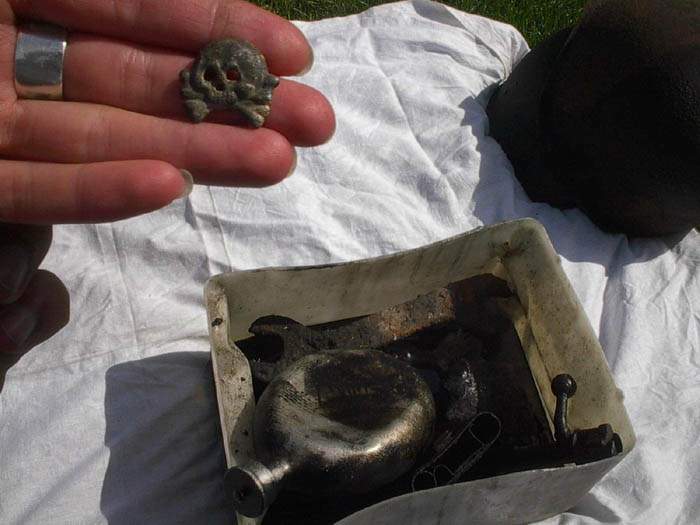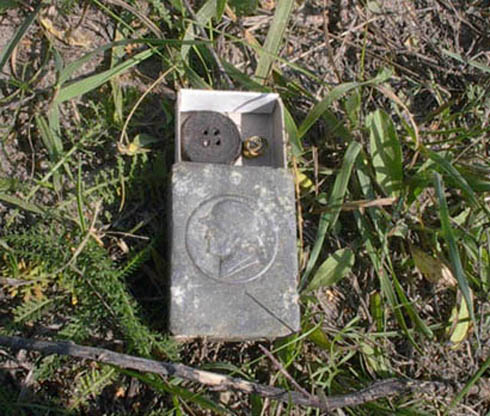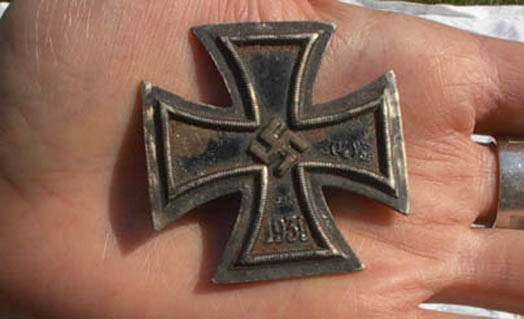| A small skull and crossbones emblem was worn on
the uniform of German tank units. This one is clean. The rest of
the items are soaking in a special mixture, waiting their turn
to be cleaned and to tell their stories.

This is a standard German army match box. The items inside were found
when I set my metal detector for jewelry and then went through
the fields. I didn't find a silver ring, but I found a gold
tooth.
Next is a button from a Russian padded jacket. There are
plenty of them on the hills of Bukrin. Civilians were forced to
take part in the Korsun battle as well. Around 30,000 of the
dead were civilians. They were from neighbouring towns and
villages where all the archives were destroyed. Now we don't
know their names, neither do we know how many died. All that is
left of those people can be placed in a matchbox.

The worst possible outcome for an army commander is to surrender.
Their deeds are in shadow, names not often mentioned, their
actions unexcused regardless of their guilt.
On left photo is German General Stemmerman, the commander of
a surrendered army in Korsun and on right photo is Kirponos,
commander of Soviet army that died in 1941 in a marsh. Both
commanders have been a victims of the situations which Hitlers
and Stalins Headquarters created for them. They had a chance to
leave on airplane, they refused this offer and both died with
their soldiers.

Below is a German Iron Cross, second class (Eisernes Kreuz).
The iron cross was only issued in times of war. The year 1939
indicates the beginning of the war. Prior to that there were the
Iron Crosses of 1914 and 1870. The Iron Cross was Hitlerís first
medal. He got it in 1914 while a corporal in the German army and
was extremely proud of it. Maybe because it was the only award
he truly earned, at a time when he was in his right place. All
the following history of the Third Reich is evidence of what can
happen if a man born to be a corporal becomes the Fuhrer.

Next Page
|